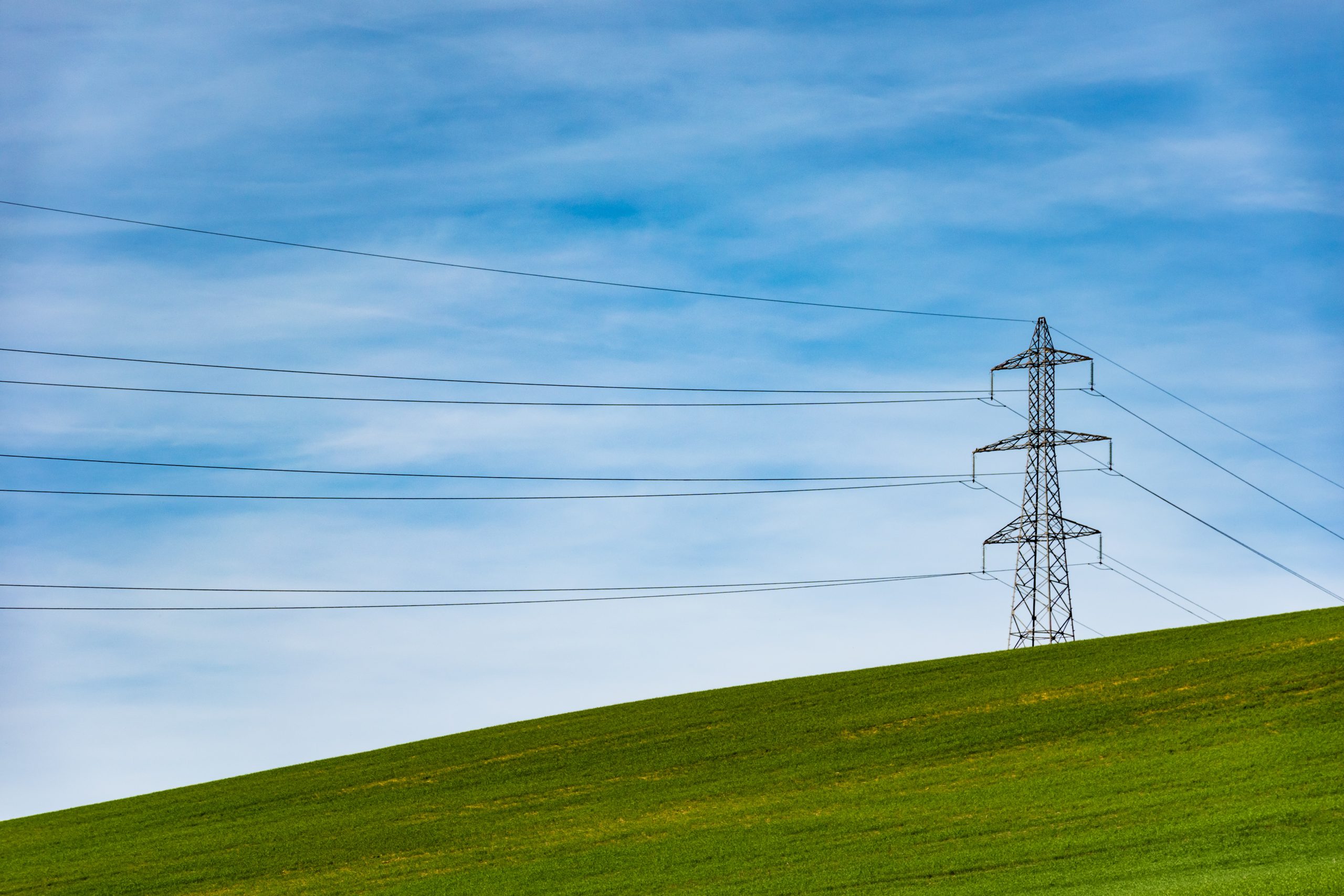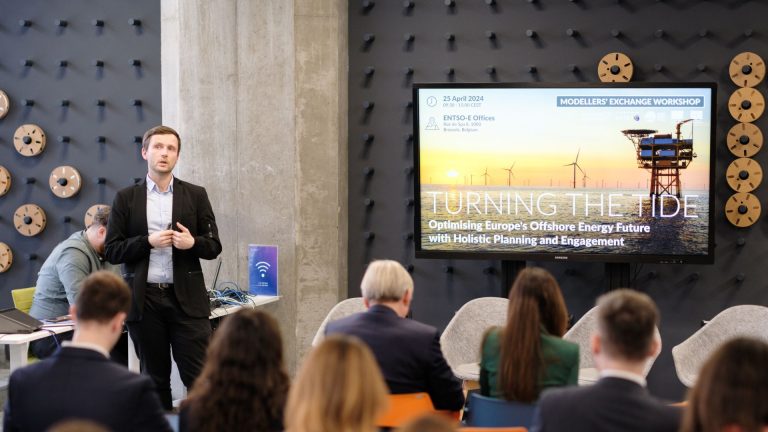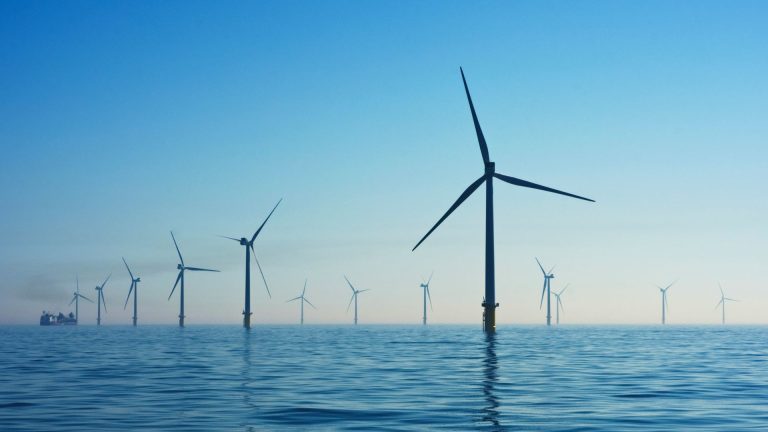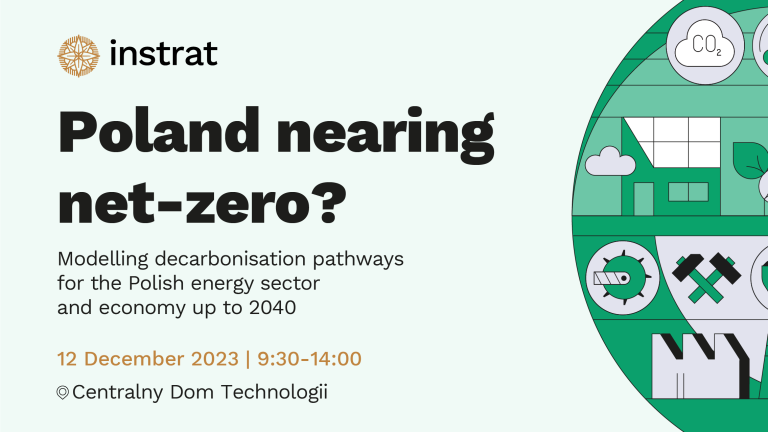In view of the growing energy crisis caused by Russia’s invasion of Ukraine, in early April 2022, the Council of Ministers adopted the assumptions for the update of the 2021 Energy Policy of Poland until 2040 (PEP2040). It was necessary to overhaul the PEP2040 energy strategy also due to the faster-than-expected development of green technologies and a change in the EU energy policy. Another factor was to align the PEP2040 with other related government documents, such as the Polish Hydrogen Strategy.
Work on the draft update was completed in Q1 2023. It was announced that at first we would receive only a “small update” in the form of a new forecast scenario for the development of Poland’s electricity sector. A full update, however, had been rescheduled for late 2023 or early 2024, to be conducted in coordination with the revision of the NECP, or the National Energy and Climate Plan 2021-2030, required by EU regulations (for an analysis of the Polish NECP awaiting update see the Reform Institute report).
In early April, key indicators of the small PEP update were made available to the media and announced at press conferences with state-owned energy companies. As stated in the announcement, the addition of the new scenario, which was to replace the already inadequate 2021 forecasts, was said to be a matter of days, only awaiting the approval of the Council of Ministers.
However, the strategic document has never been updated. According to media reports, this was due to internal disputes within the government and resistance from the social partners of the ruling coalition (mainly from the mining and fossil fuel power sectors). In June 2023, it came to light that the government and one of the trade unions agreed to abandon the small update altogether. The Energy Policy of Poland must therefore wait for a broader and comprehensive refresh, which will realistically not take place until the next parliamentary term.
At the same time, the full content of the new forecast scenario was published. However, it is presented only as a guiding material to initiate discussion, as part of hasty pre-consultations on a broader update of the PEP2040 and the NECP. The process will certainly be delayed with reference to EU requirements – a draft of the updated NECP should have been submitted to the European Commission by end-June 2023 at the latest. It is unclear as to what extent the developed scenario will serve as a point of reference for the proper update in the next parliamentary term.
But did the whole story of the small update turn out to be a waste of time and energy for the people involved (officials, politicians, journalists and activists)? Perhaps not entirely. The draft of the new scenario reflects a quiet breakthrough in the Polish energy policy. The Ministry of Climate and Environment (and, arguably, the mainstream in the government) finally admits that the decarbonisation of the Polish electricity system should accelerate, reshaping our energy mix as early as 2030. At the same time, the document, which is a failed attempt at reaching a compromise with the faction opposed to decarbonisation as such, contains numerous limitations, which we analyse in this article. They will be a subject of dispute during the planning of the future of Poland’s power sector by the government of the new term – almost regardless of the shape of the ruling coalition.
Acceptance of certain elements of reality
The PEP2040 version adopted in 2021, and still in force, became the subject of criticism shortly after its enactment. The infamous example is obviously the assumed pace of solar power development (the target of 10-16 GW solar capacity set for 2040 was achieved within the two years following the introduction of the strategy). However, the problem was broader. According to the PEP2040 vision, Poland’s energy transition was to be based mainly on the gradual replacement of coal generation by less carbon-intensive natural gas power generation, and in the second half of the 2030s, also by new nuclear capacity.
Only a complementary role was envisaged for renewables – they were projected to account for 32% of electricity generation in 2030 and 40% in 2040. The slow pace of RES development in the electricity sector overlapped with moderate ambitions for the decarbonisation (including the electrification) of other sectors. Eventually, Poland was expected to enter the 2040s while burning more than 12 billion cubic metres (bcm) of natural gas and 11 million tons of coal annually in power plants and CHP plants.
The new scenario, based, among other things, on the forecasts of the Transmission Network Development Plan for 2023-2032 prepared by Polish transmission system operator Polskie Sieci Elektroenergetyczne, represents a more coherent concept of a major decarbonisation of the Polish electricity mix in the early 2030s. The undoubted advantages of the proposed scenario include:
- Recognising the faster-than-expected development of RES – the new proposal acknowledges the rapid growth of solar power in recent years. The document assumes that further capacity will be added at a rate of about 1.8 GW per year, including both utility and prosumer installations (particularly difficult to forecast). After previous forecasts of stagnating capacity, onshore wind power is now expected to grow at a rate of 0.6 GW per year from 2025, while the long-term objective for offshore wind power at 18 GW in 2040 (consistent with the draft amendment to the RES Act) can even be considered ambitious.
- Including the electrification of the economy – the new scenario is based on updated forecasts of annual electricity production, stemming from the needs arising from the electrification of district and residential heating, transportation and industry. The document makes a good point about the need to move away from burning coal in households. This is a step in the right direction – the original PEP2040 scenario does not sufficiently cover the demand resulting from electrification, such as the operation of electrolysers for hydrogen production (whose capacity, according to the Polish Hydrogen Strategy, is expected to reach as much as 2 GW by 2030). The new scenario assumes that Poland will produce 200 TWh of electricity in 2030 and 244 TWh in 2040 (versus 160 TWh in 2022).
- Caution about fossil gas – the PEP2040 scenario presented in 2021 envisioned a key role for natural gas in the Polish energy sector in both 2030 (29% of annual electricity production) and 2040 (33%). The high level of generation from gas was an obvious consequence of pessimistic assumptions about the development of RES and the foreseen rising cost of emission allowances, limiting the competitiveness of coal power generation. However, the energy crisis has shown that the power sector’s dependence on imported fossil fuels, even with proper supply diversification, poses a risk to the country’s security and economic stability. The new forecast draws lessons from this, limiting the share of gas in the mix to 15% in 2030 and 2040, but this approach raises some difficult questions (more on this later).
- Identifying grid and system flexibility challenges – in view of the benefits of the faster-than-anticipated development of clean renewable energy, the new PEP scenario indicates the need for faster development of grid infrastructure. It is essential for connecting new energy sources to the grid. Further correct conclusions concern the development of tools that allow energy storage and system balancing to work alongside a large share of renewables. Although the problem was mentioned in previous documents, it was only by basing the model on more realistic assumptions about RES that the scale of losses due to the limited flexibility of the system could be estimated. As much as 40% of generation from renewable sources could be wasted in 2040, also reduced in favour of nuclear capacity working as the baseload.
Limitations and faults of the proposal
Compared to the out-of-date 2021 PEP scenario, the new forecast prepared by the Ministry of Climate and Environment can provide a reference point for a serious discussion of the future of the power sector in Poland. Its official inclusion in the content of the PEP in March or April 2023 would be a step in the right direction, giving a temporary foothold to current legislative initiatives or relevant negotiations at the European level.
Despite the advantages, however, the proposed small update was burdened with a number of serious limitations that will have to be solved in the course of the Polish transition.
Clean capacity development – too little ambition, too much optimism
The proposal for the new PEP scenario includes a more realistic path for renewable capacity development than the one presented in the current document version. However, it still deviates from the paths derived from independent models that optimise benefits for the Polish economy or are geared towards meeting our country’s climate commitments. To assume a steady, not-too-high rate of development of solar and onshore wind capacity beyond 2025 seems an oversimplification. As shown by the Instrat Foundation analysis, Poland cannot afford medium ambitions, faster development of RES could result in significant savings to the Polish economy as early as 2030.
An earlier study by Instrat on the phasing out of coal in the Polish electricity sector, as well as other models, instead show a continuation of these trends in the next decade, also in the face of growing needs resulting from the electrification of sectors. By the 2030s, we can significantly expand power grids and implement broader investment projects – so there is a growing space for faster connection of RES to the grid. At the very least, the government’s scenario should explore such an option (although the assumption of timely implementation of nuclear power may reduce the projected added value from further RES capacity – see below).
The new PEP scenario shows particularly low ambitions for onshore wind power – 14 GW in 2030 and 20 GW in 2040. This is far less than the optimisation analyses suggest. However, one should appreciate the improvement over the current document version, which predicted falling share of this technology in Poland’s energy mix. In Polish conditions, onshore wind farms have relatively the lowest Levelised Cost of Electricity (LCOE), and their generation profile complements well the booming solar power capacity. Their advantage over (also essential) offshore wind is that they allow better geographic dispersion of electricity-producing facilities. This is important in view of the expected difficulties in transmitting the electricity – from new production centres in the north to industrial centres in the south of the country.
Treating the RES indicators contained in the proposed PEP update as targets, a question arises whether they will definitely be met (especially in the 2030 timeframe). This is not at all obvious. Risk factors include, among others:
- only a partial update of the regulations of onshore wind farms – the required distance from buildings and environmental protection areas was finally set at 700 metres, more than previously consulted 500 meters that would enable a faster build-up (see relevant Instrat analysis),
- long duration of permitting and the procedures related to the investment process in new RES capacity,
- unstable macroeconomic situation and investor uncertainty about the regulatory environment, including in the context of electricity market interventions,
- low level of preparedness of the involved entities to implement the grid modernisation processes on a scale of several times the current expenditures.
In this context, 14 GW in wind power or 27 GW in photovoltaic farms in 2030 might not necessarily be achieved.
The 5.9 GW offshore target in 2030 is also uncertain – in recent quarters, there have been reports of further delays that could eventually extend until the end of the decade. The optimistic schedule for the expansion of pumped storage power plants and, in the context of the 2030s, the development of nuclear power is also questionable.
The unexpectedly rapid development of solar power in recent years is, of course, the success of government support schemes. However, it was also made possible by the space available in the electricity network and system accumulated over the years, enabling the connection and integration of a new weather-dependent capacity. This potential has already been largely realised, and further development of RES requires active efforts to provide an appropriate legal and infrastructural environment. The government’s foresight analysis should also include less optimistic scenarios along with their consequences, in order to make stakeholders and the public aware of the stake of regulatory considerations.
No solution to the “coal or gas” puzzle
Although criticism of Germany for over-relying on imported natural gas intensified in Poland during the energy crisis, the current PEP2040 scenario largely repeats this mistake (though with a correct emphasis on supply diversification). The new PEP scenario was supposed to offset this problem, by envisioning a stronger role for domestically mined coal at least until 2030, in which about 35% of electricity is expected to come from lignite and hard coal-fired power plants and CHPs. Despite expanding capacity (13 GW in 2030), gas power plants would be responsible for less than half of the generation and work as the most expensive peak capacity.
However, this division of roles in the proposed update is based on wishful pricing assumptions. The only scenario presented to the public assumes that in 2030 Polish coal will be more than four times cheaper per unit of energy than natural gas, and the price of emission allowances for a ton of carbon dioxide will reach 80 euros. For comparison, the strategy by the state-controlled power and fuel sector giant Orlen projects that the price will arrive at an average of 118 euros per ton as early as 2027-2030.
If we adopt pricing assumptions closer to what the markets expect, our modern gas-fired capacity will operate on a much broader level, relegating most of the coal-fired units still remaining in the system to the role of a load-following or even peak capacity. This division of roles is based not only on modeling by Instrat, but also by other institutions. In this context, the market viability of coal-fired power plants is at stake, even given the remuneration from the capacity market, and demand for coal will be lower than government narratives or sectoral agreements would suggest.
The merit order principle is, of course, not the only mechanism shaping the structure of Poland’s generation dispatch. Production in the most expensive coal units may be required due to district heating needs and technical constraints (e.g. the forced assignment of some gas units to the role of peak power sources due to the inability of coal units to operate in this model). The level of production from gas will be affected, among other things, by the technical ability to import the amount of fuel needed in the Polish economy. Also, the relative condition of the coal power industry will be improved (unfortunately!) by delays in the implementation of investments in low-carbon sources or interconnectors with neighbouring countries.
Any such change is associated with an increase in emissions from the electricity sector and an increase in energy prices for consumers, in particular in the corporate sector. It will also be expensive and difficult to negotiate the forms of state aid at EU level that could help coal-fired power plants avoid premature bankruptcy, especially after 2028.
To some extent, the new PEP scenario recognises the main solution to the gas-coal puzzle, which is, of course, the faster development of clean energy. However, even this quicker deployment of RES will not permit bypassing difficult decisions and discussions about the role of coal and gas during the transition period, in which economic and energy rationales clash with pressure from social groups and national security arguments. To ensure the security of raw materials supply, a broader approach will be required, including reductions in coal and gas consumption in industry, district heating or households (see, for example, the Energy Forum’s analysis on limiting natural gas use).
The solution is certainly not to present a scenario with only one set of price assumptions, in addition particularly favourable for the domestic coal economy.
A shaky paradigm – the role of flexibility in the new system
In 2023, the concept of “curtailment”, meaning temporary restrictions on production from RES due to the lack of grid transmission capacity or export possibilities, entered the power system debate in Poland. For the time being, curtailment in Poland results from the limited flexibility of conventional power plants, which we cannot fully shut down as a result of the need to maintain the system operating parameters or to keep them ready to resume operation when production from RES suddenly drops (e.g. at dusk). In the future, on the other hand, temporary production from RES may exceed all domestic electricity demand. This phenomenon is on a marginal scale today, and we can still add a lot of renewable capacity to the system with only a small increase in losses – the new PEP scenario predicts about 7% reductions in annual production from RES in 2030.
However, the situation will change in the 2030s. The scenario assumes the further development of RES capacity (especially offshore wind power plants) and new nuclear units (7.8 GW in 2040). Despite government and sector assurances about the technical flexibility of modern nuclear power plants, in practice, the scenario envisions their continuous operation within limits set only by technical reasons. The model shows that nuclear capacity displaces a significant portion of production from RES, whose losses will rise to about 40% in 2040. The assumptions of this operating pattern are consistent with observations from systems with a large share of RES and nuclear power, such as in California.
The curtailment of clean energy is not a disaster we should avoid at all costs – shut-down photovoltaic panels or wind farms do not emit greenhouse gases or suffer problematic wear. However, the high level of reduction raises investment and operating costs per unit of energy used. In such a system, the benefits of additional capacity may still be sufficient to justify new investments (either directly on a market basis or through a state system of contracts for difference).
The results of the government’s modelling for 2040 show the limitations of the current transformation model, based primarily on clean capacity development. It certainly brings huge benefits up to a certain point – in 2040, the electricity production emissions intensity in the Polish system drops by about 75% compared to the status quo. However, coal and gas still account for more than 25% of total generation, and their production is holding up despite the fact that the total is lower (56 TWh) than the losses from RES curtailment alone (70 TWh).
How do we eliminate this last carbon-intensive quarter from Poland’s electricity mix and avoid huge losses of clean energy? The proposed PEP update points out several times the need to “intensify the development of storage, new energy carriers or flexibility tools”. This is the right direction, but in 2023, such analysis should already be much more advanced. We need to formulate in-depth forecasts, targets and policies for the development of energy storage (for example, the new PEP scenario assumes only a twofold increase in battery storage capacity between 2030 and 2040).
Poland’s strategy should set the framework for conscious development of the energy system in the context of parameters such as the total gradient of flexible capacity (the possibility of rapid substitution of RES generation, e.g. after dusk) or different types of reserves not based on continuous operation of thermal power plants. Currently, in addition to pumped storage power plants, it is mainly the coal and gas-fired ones operating at any given time that are responsible for ensuring reserve and flexibility. A positive example is the Irish grid operator EirGrid, which has set and is gradually meeting targets for readiness to achieve a high instantaneous System Non-Synchronous Penetration (SNSP). This is a capacity of the system to safeguard its stability with lowering reliance on the continuous operation of polluting conventional capacity. The high value of SNSP makes it possible for most or even almost all gas or coal-fired power plants to be shut down at the time of high generation from RES.
The issue of supplementing national energy strategies with aspects related to flexibility and storage is included in the proposed reform of the design of European electricity markets. This issue is already partially addressed by the PSE(a draft of new Balancing Conditions).
Without incorporating such solutions, the 2040 forecast makes little sense. It is based on the traditional paradigm, in which electricity demand is essentially inelastic, and the system must rely on a significant stable baseload of controllable sources (in 2040, mainly nuclear capacity), which are only supplemented by a mix of weather-dependent RES and conventional peaker plants (in 2040 – mainly gas).
In the long term, we will gradually move towards a model in which low-cost and widespread, though uncontrollable, RES are the basis, while other supply and demand components of the system work with them as required. This flexibility of other parts of the system will be necessary to achieve the near-complete decarbonisation of the electricity sector, which, due to our climate commitments, should occur around 2040 at the latest.
Even if we assume the addition of several GW of nuclear power (like in the new PEP scenario), the large-scale implementation of energy storage and dynamic demand is necessary to achieve decarbonisation. Moreover, if we plan the development of our power system around the upcoming nuclear baseload, we risk years and years of high emissions from “temporary” coal and gas baseload, especially in case of delays in the implementation of the Polish Nuclear Power Programme.
The first step of Poland’s energy transition is the development of RES, but the second step will be precisely to make the entire model of energy production, storage and demand more flexible. This is a good time to start preparing for it in earnest. For this reason, creating a strategy for electricity sector development in isolation from planning for a broader decarbonisation of the entire economy makes even less sense than before.
How not to talk to the public about the transition
The history of the small PEP update is another indication of the poor quality of strategic planning in Poland. According to the Ministry of Climate and Environment, the document was to be ready for formal adoption by the government as early as Q1 2023, without public consultation with experts or civil society. Of course, it is known that various categories of stakeholders influenced the design of this project – from public institutions, through state-controlled energy companies, to (according to media reports) selected social groups, such as trade unions. However, the results of the work and agreements have already been presented to the wider public as fait accompli. Full consultation was not to be organised until the subsequent broader update of the PEP.
The final published document presents only one scenario (although it is unofficially known that more have been developed) which does not include a sensitivity analysis of, for example, different price assumptions. The document has not been published with a model or even a set of assumptions, so we can only guess what the approach of its creators to, for example, the issues related to system flexibility is. Many indicators directly reflect the assumptions made based on the analysis of various reports and are not subject to in-depth optimisation verification. The new PEP scenario is visibly better than the existing one, but from the point of view of the public, it would be another “black box” product, not taking advantage of public discussion and not facilitating it post facto due to unpublished conditions and assumptions.
The final publication of the scenario in June 2023 as a part of pre-consultations, unfortunately, only adds to the negative impression and in practice equals a lack of respect for civil society, which can comment on the new scenario only after it has already gone into the government’s drawer.
The format of the pre-consultations also leaves much to be desired – apart from a general introduction and a summary, the questions begin with short titles, such as “energy security, including energy infrastructure” or “the role of other fuels”, after which the following four boxes were made available to participants: “identified challenges”, “proposed goals/solutions”, “quoted analyses”, “financial implications/estimated necessary expenditures”.
Source: Ministry of Climate and Environment, screen: Instrat
This format does not encourage detailed reference to, for example, the developed scenario for the electricity sector or other government proposals (the questions also apply to other sectors according to the scope of the NECP). The form resembles more of a loose brainstorming, which will result in mostly vague buzzwords (but these are, after all, well-known in the Ministry of Climate and Environment). This is manifested in the very content of the published scenario, which in its narrative layer (though not necessarily in quantitative terms) is in principle in line with the mainstream European climate policy.
Awaiting a breakthrough
The fate of the small update of the PEP was sealed as a result of internal friction within the ruling coalition and its social base. The sequel will probably not take place until after the parliamentary elections. In fact, the same tensions are already evident in the very content of the document, which plans to reconcile the relatively quick development of clean energy with the protection of the interests of the coal economy at least until 2030. This attempt to kill two birds with one stone shows the limitations of this approach, which has characterised the Polish energy policy in recent quarters, for example, in the context of the partial liberalisation of the onshore wind act. It is possible to get some things done this way, and this and other results of the work of a pragmatic faction inside the government or institution should be appreciated. Ultimately, however, without political support, it is not possible to adopt and implement a comprehensive energy transition strategy.
This leaves Poland for months to come without a well-developed scenario for decarbonising the electricity sector. Although the direct impact of the government’s forecast scenario is limited, it will harm the timing and quality of work on the NECP or the government’s negotiating position regarding interventions during the transition period (e.g. a capacity market for coal-fired power plants or state aid for mines). Indicators from the current PEP2040 may continue to make their way into international reports, painting an exaggeratedly bleak vision of the Polish power sector as a coal and gas relic for decades to come (for example to investors considering corporate ESG targets). In the end, without an official government vision for decarbonising the economy, downstream strategies or plans will inevitably become incomplete and inconsistent, and legitimate initiatives undertaken, for example, by energy market institutions may end in failure.






